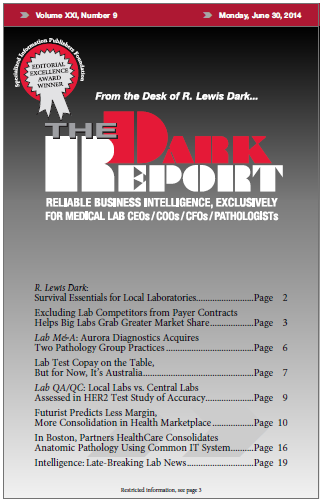CEO SUMMARY: Patient copayment is the idea that always appeals to government health officials who want to control healthcare costs. In Australia, Parliament has yet to vote on a bill that would, starting in July 2015, institute a patient copayment of $7.00 Australian for general practice visits, medical laboratory tests, and diagnostic imaging services. Reaction …
Lab Copay on the Table, But for Now, It’s Australia Read More »
To access this post, you must purchase The Dark Report.


